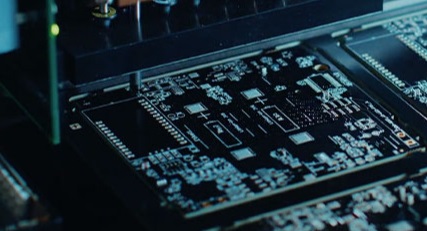Radar is one of the indispensable sensing technologies for ADAS (Advanced Driver Assistance System) and AD (Autonomous Driving) systems. Adas radar pcb market is a technology that uses radio waves to detect objects and obstacles around the vehicle. In this articles, we will explain radar used in ADAS/AD systems and introduce the product lineup of electronic components that make up radar systems.
What is radar used in ADAS/AD systems?
ADAS and AD are systems that assist drivers in driving safely and reduce their burden. Radar is one of these technologies, and it uses radio waves in the millimeter wave band to measure the distance to the target object and sense the surrounding environment. The 24GHz, 77GHz, and 79GHz frequency bands are mainly used in automotive radars, but it is expected that radars in the 79GHz band will be added in the future to improve detection resolution.

adas radar pcb market
In addition to radar, ADAS/AD systems also use technologies such as cameras and LiDAR (Light Detection and Ranging). By integrating these sensor information, the surrounding environment can be recognized more accurately to assist safe driving. By combining sensors with different characteristics, the performance degradation of each sensor in environments where it is not good at can be compensated, contributing to improving the performance of the entire system that supports various environmental conditions.
For example, a camera is very good at recognizing colors and shapes, but its ability is limited in detecting objects at a long distance and in bad weather. LiDAR can capture the 3D shape of an object with high resolution, but its detection performance deteriorates in bad weather. On the other hand, radar can detect objects even in bad weather, but cannot obtain shape and color information. Therefore, radar is often used in combination with other sensing technologies.
Measurement and object recognition method
The principle of radar measurement and object recognition is as follows:
Distance measurement
Distance is measured by transmitting (radiating) radio waves to the target and receiving the reflected waves from the object. It measures the time from the transmission to the reception of the radio wave, and calculates the distance to the object.
Object recognition
The object is recognized using the coordinates and distance measurement results when the radio wave is transmitted. At this time, point cloud imaging is performed, and the shape and position of the object are determined. However, the resolution of radar is relatively low, so it cannot determine the type of object (person, car, building, etc.). When you want to identify an object in more detail, you can increase the frequency to improve the resolution.
About market and equipment trends
The number of radars installed is expected to increase due to the increase in the number of self-driving cars, the improvement in the level of self-driving, and the mandatory use of automatic brakes. If the frequency of millimeter waves is increased, the object recognition accuracy (resolution) of radar will increase, but attention must be paid to the increase in data processing volume. In the future, the functions and performance required of electronic components that constitute radars include "high power", "high heat resistance" and "miniaturization/lightweight". The requirements for each are as follows:
●High power
If the amount of data processing increases due to high resolution, the power consumption of semiconductors such as the main CPU will also increase, so high power is indispensable.
●High heat resistance
As electronic components become increasingly miniaturized, the heat per unit area will increase. By having heat resistance, deterioration caused by heat generated by the components themselves and heat absorbed from surrounding components can be prevented.
●Miniaturization/lightweight
In addition to the above issues, it is necessary to reduce the size of electronic components.
About the circuit configuration of the radar system
Overall configuration
The radar system is composed of the following components.
High-frequency wireless circuit: for wireless millimeter wave transmission and reception
Antenna: for radio wave transmission and reception. A power amplifier is usually used on the transmission side to amplify the signal
MCU (microcomputer): sends control instructions to the external ECU
Transceiver: a component or circuit used to communicate with the outside (CAN communication)
DC/DC converter: converts the voltage provided by the battery into the voltage required by each electronic component or circuit
Individual circuits and components
DC/DC converter
In the DC/DC converter circuit, conductive polymer hybrid aluminum electrolytic capacitors are usually used to remove noise from the input and smooth the output, automotive power inductors are usually used for voltage conversion, and chip resistors (high-precision chip resistors) are usually used for voltage measurement.
Noise removal, switching and smoothing - Conductive polymer hybrid aluminum electrolytic capacitors
POINT
❶ Contributes to miniaturization and high power (low voltage and high current) of circuits due to large capacitance, low ESR and high ripple performance
❷ Supports high-frequency capacitance characteristics, contributing to broadband and high-frequency removal of noise generated in high-frequency switching of circuits
Voltage conversion - Automotive power inductors
POINT
❶ Contributes to miniaturization and high power (low voltage and high current) of circuits due to low loss and high current performance of metal magnetic materials
❷ Contributes to suppressing loss in high-frequency switching of circuits due to high-frequency loss characteristics (low ACR)
Voltage measurement - Chip resistors (high-precision chip resistors)
POINT
❶ Contributes to high-precision control of circuit output characteristics due to resistance value tolerance and low TCR performance of thin film structure
Radar is an important system for identifying objects and measuring the distance to them. As the number of self-driving cars increases and the level of autonomous driving improves, the number of radars installed will increase in the future. In order to improve the object recognition accuracy of radar, it is necessary to increase the frequency of millimeter waves to improve the resolution. To do this, we must pay attention to the adas radar pcb market increase in electronic component loss due to the increase in data processing volume.